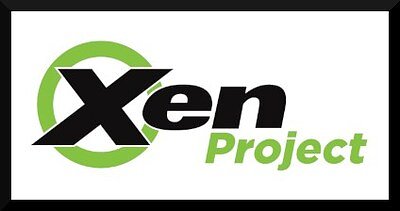
Xen Project's Open-Source Push Scales from Cloud to Safety-Critical Systems
The latest Xen hypervisor release positions open-source virtualization as a key enabler for innovation in automotive, embedded systems, and emerging RISC-V architectures. A shift towards greater safety and flexibility.
Xen Project's Open-Source Push Scales from Cloud to Safety-Critical Systems
NEW YORK, NY – November 19, 2025
The Xen Project has released version 4.21 of its open-source hypervisor, marking a significant step in its evolution beyond traditional cloud virtualization. This update focuses on modernizing the platform, boosting performance, expanding architectural support – notably with early enablement for RISC-V – and enhancing security, particularly for the rapidly growing automotive and embedded systems markets. The release signals a broader industry trend: the increasing reliance on open-source solutions for mission-critical applications.
Beyond the Cloud: Diversifying into Embedded and Automotive
For years, Xen has been a cornerstone of cloud infrastructure, powering platforms at Amazon Web Services and other major providers. However, the latest release demonstrates a clear strategy to diversify beyond this core market. “We’re seeing a huge demand for virtualization in areas where it wasn’t traditionally used before,” explains a source familiar with the project’s roadmap. “Automotive, industrial automation, medical devices—these sectors require strong isolation, real-time performance, and the ability to consolidate multiple operating systems onto a single platform.”
The shift is driven by several factors. The increasing complexity of modern vehicles and embedded systems demands greater flexibility and scalability. Virtualization allows manufacturers to consolidate functionalities, reduce hardware costs, and improve time-to-market. Moreover, the growing emphasis on safety and security necessitates robust isolation between critical components. “The ability to create a secure environment for safety-critical functions is paramount,” says a source within the automotive industry. “Virtualization provides a strong foundation for achieving that.”
Several key partnerships are driving Xen's adoption in these sectors. Renesas, for example, is utilizing Xen in its R-Car S4 SoC, enabling the configuration of embedded automotive functions and peripherals. AMD is actively contributing to safety certification efforts across both x86 and ARM architectures. And Arm has established Xen as a reference type 1 hypervisor for its platforms. These collaborations highlight the growing confidence in Xen's ability to meet the demanding requirements of these industries.
RISC-V and the Future of Open Hardware
While the expansion into automotive and embedded systems is noteworthy, the early RISC-V enablement in Xen 4.21 is arguably even more significant. RISC-V, an open-source instruction set architecture, is gaining momentum as a viable alternative to proprietary architectures like x86 and ARM. Its open nature fosters innovation, reduces licensing costs, and allows for greater customization.
“RISC-V is a game-changer,” says an industry analyst. “It’s empowering companies to design their own processors and tailor them to their specific needs.” Xen’s support for RISC-V positions the hypervisor as a key enabler for this emerging ecosystem. While the implementation is still in its early stages, the commitment to supporting this architecture demonstrates a forward-looking vision.
The potential impact of RISC-V is particularly pronounced in the automotive sector. The demand for specialized processors for autonomous driving, ADAS, and in-vehicle infotainment is driving rapid innovation. RISC-V allows manufacturers to create custom processors that are optimized for these specific workloads. “The ability to design your own silicon is a huge advantage,” says a source within a leading automotive manufacturer. “It allows us to differentiate our products and stay ahead of the competition.”
A Commitment to Safety and Certification
The Xen Project isn’t simply adding features; it’s investing heavily in ensuring the platform meets the stringent safety requirements of critical applications. The project has established a dedicated Functional Safety Special Interest Group (FuSa SIG) focused on achieving certification under standards like ISO 26262 (automotive), IEC 61508 (industrial), and DO-178C (avionics).
A core aspect of this effort is adherence to the MISRA C coding standard, a set of guidelines designed to enhance code quality and safety. Xen 4.21 includes significant improvements in MISRA C compliance, with a focus on preventing new violations from entering the codebase. The project is also evolving its architecture to support a “dom0less” configuration, eliminating the traditional Dom0 domain and further enhancing isolation and security.
“Safety is paramount,” explains a source involved in the certification process. “We’re not just building a hypervisor; we’re building a platform that can be trusted to operate reliably and securely in mission-critical applications.” The commitment to safety certification is a key differentiator for Xen, particularly in the automotive and industrial sectors, where reliability and security are non-negotiable.
The Xen Project’s latest release showcases a strategic shift – a move beyond its cloud roots towards a broader range of applications demanding high performance, robust security, and a commitment to open standards. The growing adoption in automotive, embedded systems, and the embrace of RISC-V position the hypervisor as a key enabler for innovation in these rapidly evolving industries.
📝 This article is still being updated
Are you a relevant expert who could contribute your opinion or insights to this article? We'd love to hear from you. We will give you full credit for your contribution.
Contribute Your Expertise →